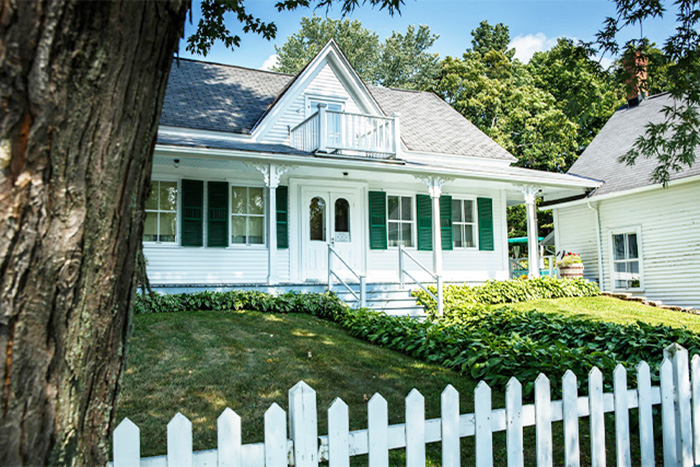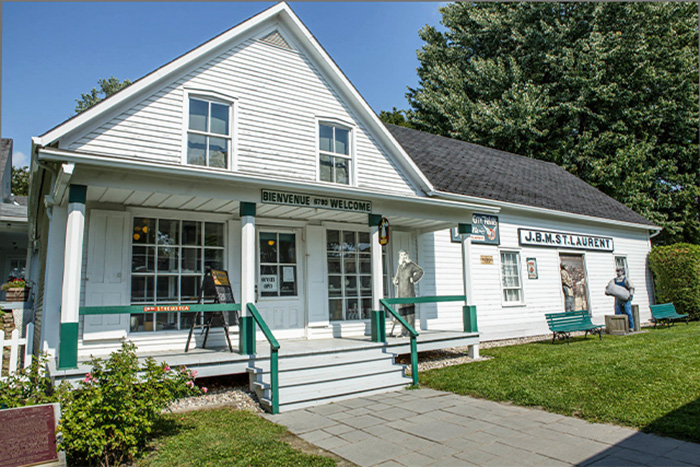
Historic buildings
Louis S. St. Laurent National Historic Site
Single family home

The neoclassical wooden house was built between 1839 and 1843. It became part of the family estate of Jean-Baptiste-Moïse St. Laurent and Mary Ann Broderick in 1881, the year of their marriage.
Green-painted shutters adorn the windows of the one-and-a-half-storey house. The glass-panelled front door opens onto a central vestibule, around which the rooms revolve symmetrically. The whole is a faithful reflection of the St. Laurent family's living environment.
The house is slightly set back from the general store, which was built around 1866 by Jean-Baptiste-Moïse, father of Louis S. St. Laurent, who was born here in 1882.
The general store and warehouse

The general store, a street-gabled building, was erected around 1866. Between 1903 and 1908, Jean-Baptiste-Moïse St. Laurent added a warehouse at right angles to the main building.
General stores, also known as "retail stores", followed the growth of villages at the end of the 18th century, and multiplied in the 19th century. The 1941 census counted nearly 3,000 general stores in rural Quebec.
Dispensing all the goods needed for daily life, the general store became, by necessity, a place for social gatherings between customers. Even the upstairs of the St. Laurent store was used as a meeting room for members of a charitable fraternal organization, of which Mr. St. Laurent, the father, was secretary at the time.
Gazebo

A recent addition to the St. Laurent garden, the gloriette, a small outdoor gazebo made of solid wood, was the site of summer concerts and festive gatherings.
It was installed in spring 2023 using traditional assembly techniques (website in French only), following a thorough design process.
All the wooden parts required to build the gazebo were conceptualized, designed and cut in the workshop by students in Attestation of College Studies (ACS) in built heritage crafts at CEGEP du Vieux-Montréal (website in French only), under the experienced eye of Jérémie Abbate, carpenter and program instructor.
This masterpiece, which both nods to the past and aims to be a sustainable building for the future, was made possible in partnership with Parks Canada and the Conseil des métiers d'art du Québec (CMAQ) (website in French only).
Related links
- Date modified :